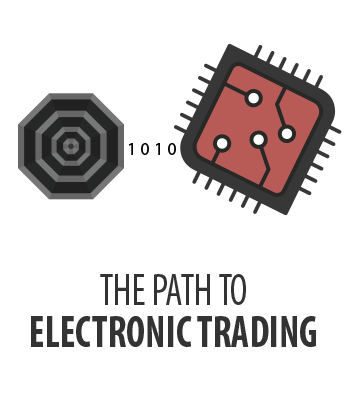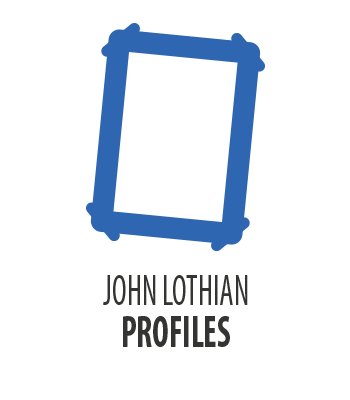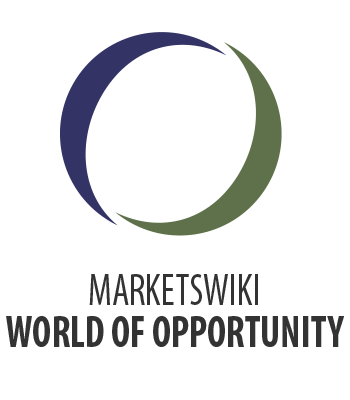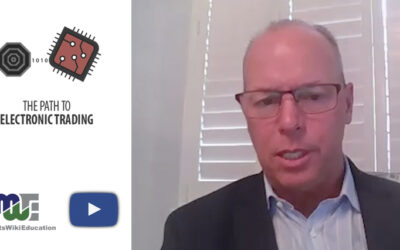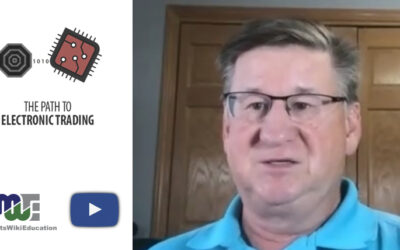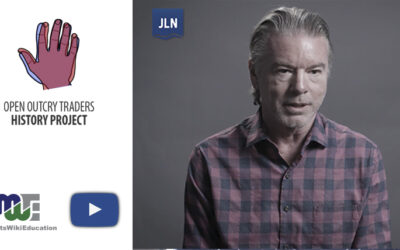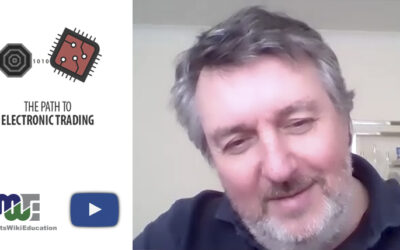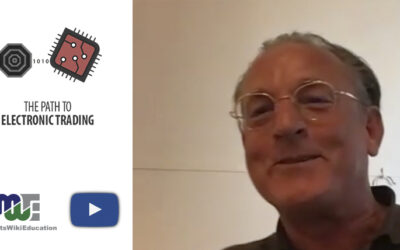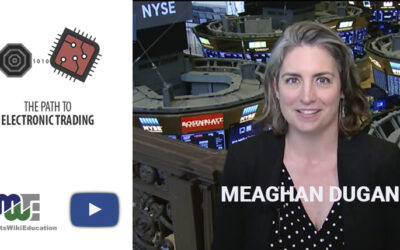For Charles Farra, there were many steps on the path to electronic trading that saw him start as a runner for Cargill Investor Services in 1981 and work his way up in the organization. He would serve the firm in Chicago, London and Tokyo during a time when new products and big markets led to incredible growth in the futures industry.
Farra started at CIS just months before Treasury yields would hit all time highs and bonds would embark on a multiple-decade price rally.
Farra quickly moved from the Chicago Mercantile Trading floor for CIS into the back office, handling the daily balancing of segregated funds for customer and house accounts.
One memorable early experience was when a CIS customer, Lehman Brothers, wanted to deliver $3 billion worth of Ginnie Mae certificates at the CBOT against its short futures position. Farra said two big guys with a suitcase and handcuffs brought 30,000 GNMA certificates for Farra and some colleagues to count to prepare for the delivery. They had to count the certificates three times to make sure they had the right count.
During a short stint in London on the sales desk in 1987, Farra and a colleague working the night hours experienced a dramatic increase in calls when all 10 phone lines lit up. One bank client called, and Farra asked if he had an order. The client said he needed a minute.
Farra was busy with other clients so he put the phone down, which did not allow the customer to hang up and call back. The bank customer had to leave his home and walk three blocks to a pay phone to be able to call back and finally place an order. Such were the challenges in the days when open outcry trading was bursting at the seams with volume.
Farra moved to Japan in May of 1987 and set up a 24-hour desk for CIS to handle business to the U.S. In order to be able to quickly place orders in Chicago and New York, CIS had to keep an open phone line rather than have a 20-second wait to connect by dialing the U.S. before every order.
The cost of that open line was about $30,000 per month. CIS quickly found a solution to this high cost, though commissions in those days were high enough to be able to absorb such costs, Farra said.
When the CBOT opened the night session for bonds in the 1980s, three big local traders flew from Chicago to Tokyo to meet with customers to assure them they would be there to make markets. Those local traders were Tom Baldwin, Rob Moore and Jim Heinz.
While working for CIS back in Chicago, Farra was on the 24-hour desk handling customer orders from China. A deal with some Chinese FCMs saw an overwhelming number of small orders come through the trading desk that only electronic trading could really manage, Farra said.
Farra would go on to work for Jump Trading before it was named Jump. He also worked for the Chicago Board of Trade and helped them develop new electronic markets in Mini Dow and Gold and Silver futures.
He made the transition to the CME Group after the CBOT was acquired and worked on the stock index team, later returning to international sales. He helped the CME Group develop business from Brazil. Farra traveled the world for CIS and CME Group and made over 100 trips to Japan during his career.
Farra has always been a student of the markets. He even went back to school in the 1980s to get a masters degree at DePaul University. One class he took there was on options, and between the class and his experiences with CIS customers trading options, Farra became hooked on them.
Today, he is the founder and principal of Options4Futures, offering futures and option trading recommendations and strategies.
For Charles Farra, the path to electronic trading was a long and winding road, but one that enabled him to see the industry outgrow open outcry trading and ultimately fully embrace electronic trading.
